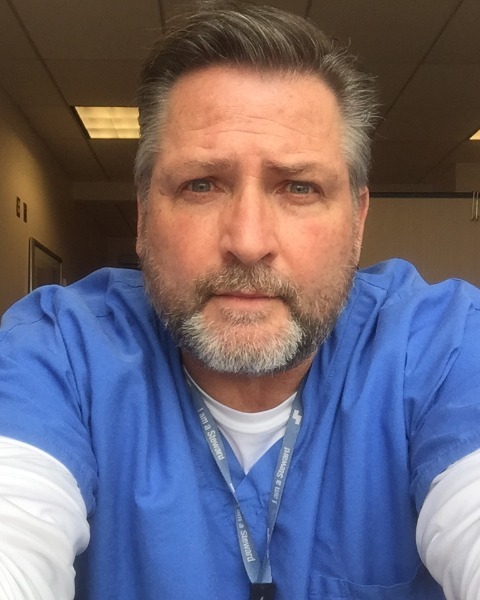
eAudiology
Using Otoacoustic Emissions to Diagnose Hidden Hearing Loss
-
Register
- Non-member - $60
- Member - $35
- Student - $10
AAA 2021 Virtual: Using Otoacoustic Emissions to Diagnose Hidden Hearing Loss
Presented at AAA 2021 Virtual
Presenter(s): Mark A. Parker, PhD
Duration: 30 minutes
CEUs: 0.05 AAA CEUs
Instructional Level: Intermediate
Program Focus: Knowledge
Learning Outcomes: Upon completion, each participant in the eAudiology Web Seminar will be able to:
- Describe the differences between operational synaptopathy, outer hair cell dysfunction, and AN untuning.
- Use the QuickSIN and DPOAE analyses to predict hidden hearing loss in their patients.
- Evaluate clinical normative data to define OHC dysfunction in persons hearing within normal levels.
Description:
Abstract: Hearing-in-noise (HIN) is a primary complaint of both the hearing impaired and the hearing aid user. Both auditory nerve (AN) function and outer hair cell (OHC) function are thought to contribute to HIN, but their relative contributions are still being elucidated. The first question is whether the standard audiogram detects AN dysfunction and OHC dysfunction? The second question is whether HIN performance is primarily dependent on AN function, OHC function, or both functions?
Summary:
Background: OHCs play a critical role in HIN by fine tuning the response of the basilar membrane. Further, animal studies suggest that cochlear synaptopathy may be another cause of HIN difficulty. While there is evidence that cochlear synaptopathy occurs in animal models, there is debate as to whether cochlear synaptopathy is clinically significant in humans, which may be due to disparate methods of measuring noise exposure in humans and our high variability in susceptibility to noise damage. Rather than use self-reported noise exposure to define synaptopathic groups, this presntation assumes that the general population exhibits a range of noise exposures and resulting otopathologies and defines cochlear synaptopathy “operationally“ as low CAP amplitude accompanied by normal DPOAE levels in persons with low pure tone averages.
Design: Adult subjects have been recruited to participate in an ongoing study and variables such as age, self-reported gender, pure tone audiometry (0.25-20 kHz), subjective perception of HIN difficulty, Quick Speech-in Noise (QuickSIN) test, 45% time compressed word recognition (WR) in 10% reverberation and WR in the presence of ipsilateral speech-weighted noise have been collected. These variables were correlated with OHC function measured by distortion-product otoacoustic emission (DPOAE) signal to-noise-ratio (SNR), and AN function measured by compound action potential (CAP) peak amplitude and ratio to summating potential measured using electrocochleography.
Results: Operational Synaptopathy may be present in as many as 30% of individuals with normal hearing. Persons hearing within normal limits (WNL) may exhibit HIN difficulties, and persons hearing WNL may exhibit two distinct types of otopathologies undetected by the standard audiogram (a.k.a. hidden hearing loss) namely operational cochlear synaptopathy and OHC dysfunction. AN untuning secondary to OHC dysfunction is a third otopathology that occurs in subjects with a Mild-Moderate sensorineural hearing loss (SNHL). Finally, the data show that operational cochlear synaptopathy does not correlate with HIN dysfunction. Rather, HIN performance is primarily governed by OHC function, while AN untuning also plays a lesser but statistically significant role.
Conclusions: The results of this study suggest the following: 1) persons hearing WNL may exhibit HIN difficulties; 2) persons hearing WNLs may exhibit AN dysfunction and OHC dysfunction; 3) AN untuning secondary to OHC dysfunction occurs in subjects with Mild-Moderate SNHL; 4) HIN performance is primarily governed by OHC function rather than AN function.

Assistant Professor, Tufts University School of Medicine
Dr. Parker earned his MS in Speech and Hearing Sciences, and his PhD in Neuroscience. He conducted his post-doctoral training at Harvard Medical School in the area of hair cell regeneration. For the past decade and a half, he has researched stem cell and gene therapies for the treatment of hearing loss. Dr. Parker currently serves as the Director of Audiology at Steward St. Elizabeth’s Medical Center and as an Assistant Professor of Otolaryngology at Tufts University School of Medicine. Here, he continues his basic research program, teaches hearing and balance assessments to students, leads a team of clinical researchers, manages the Audiology program, attends to patients, including fitting of conventional and implantable hearing aids.
Disclosure: Financial Disclosures: I do not have any relevant financial relationships with anything to disclose.
Non-Financial Disclosures: I do not have any relevant non-financial relationships with anything to disclose.
